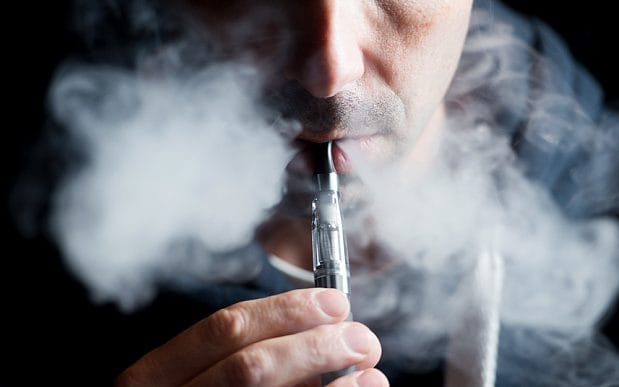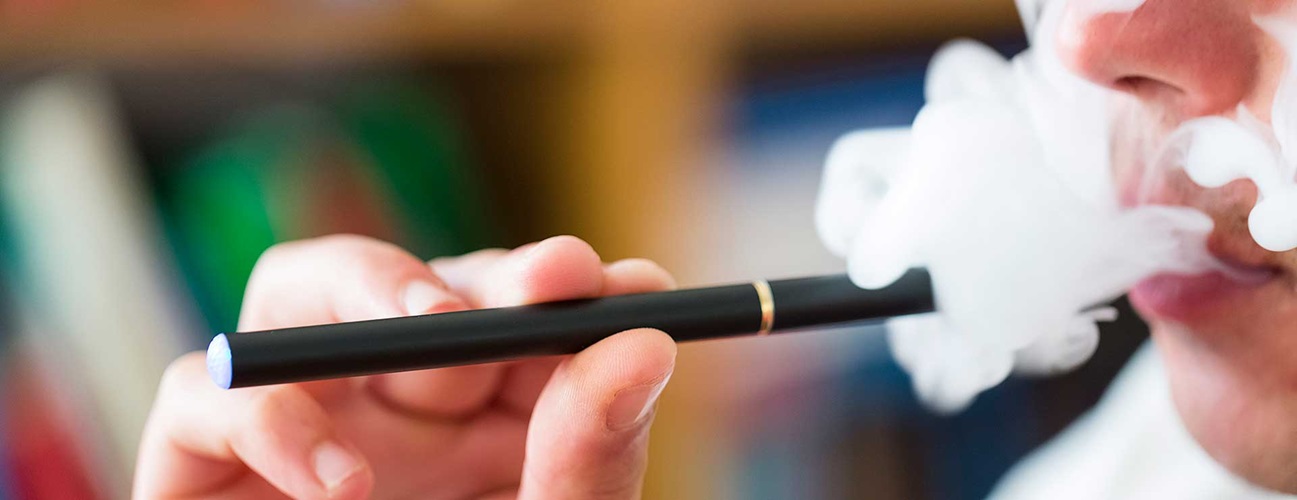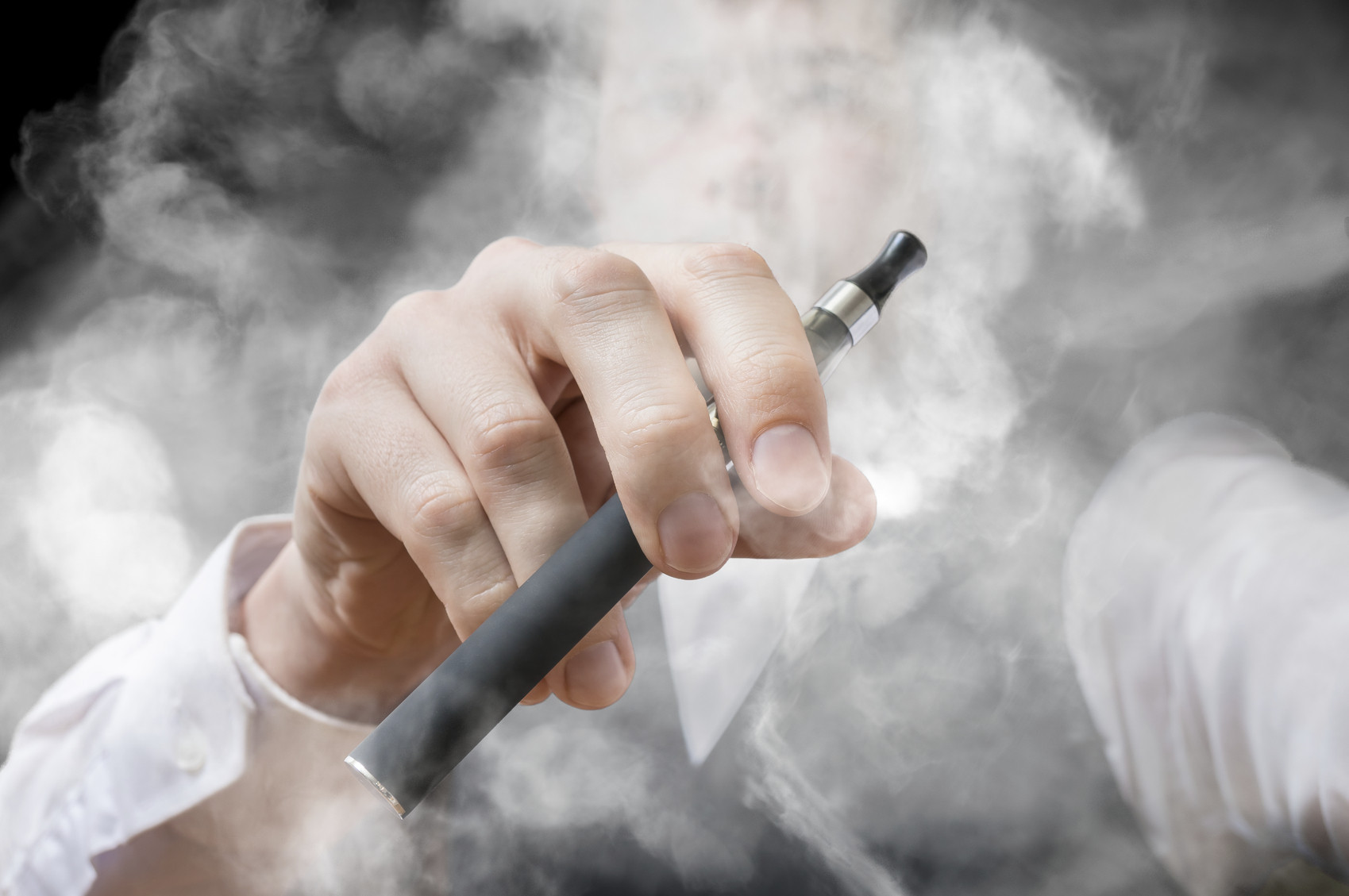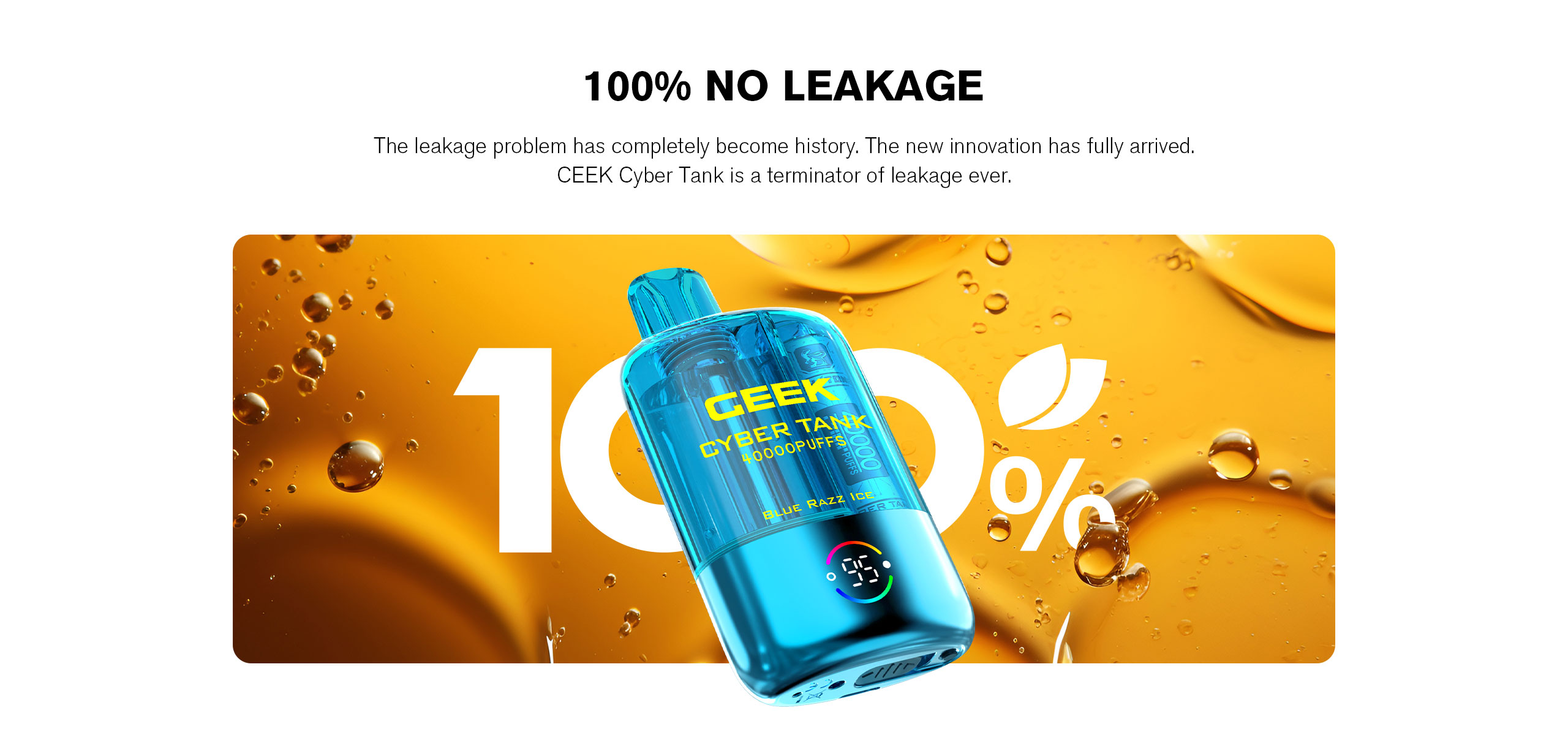WARNING: This product contains nicotine. Nicotine is an addictive chemical.
In the clash of the clouds, where vape smoke battles cigarette smoke for the title of ‘Least Nasty Nemesis’, many of us are left scratching our heads. Could one really be better than the other, or are we just choosing between a rock and a hard place? Well, grab your popcorn (and maybe a face mask) as we dive deep into the smoky realm to compare these two frenemies. Spoiler alert: it’s going to be a foggy journey!
Watch the video to learn more.
Vaping may sport a sleek, modern facade with its intriguing array of gadgets and flavors, but let’s not be dazzled by its digital dance. The core ingredient, nicotine, remains a master of mischief in both cigarettes and vapes, adept at addicting users. Add to that a buffet of artificial flavorings and propylene glycol, and you’ve got yourself a respiratory rave that’s hard to shut down. This isn’t to mention the ‘popcorn lung’ phenomenon—a condition linked to a chemical used in many flavorings. While vapers may escape the tar pits of traditional cigarettes, they’re certainly not inhaling a breath of fresh air.
Cigarette smoke, with its extensive entourage of chemicals, remains a notorious air quality offender. Each puff is a potent potion of carcinogens and toxins, unmasking its dangerous effects slowly but devastatingly. Long-term relationships with these smoky swirls can lead to a litany of health woes—lung cancer, heart disease, and chronic obstructive pulmonary disease (COPD), just to name a few. Despite public awareness and declining usage rates, cigarettes still manage to hold a tight grip on many, proving that old habits die hard and often bring dire consequences.

Indeed, the allure of vaping’s tech-savvy devices might seem like a breath of fresh tech air, painting itself as a safer passage for nicotine lovers. However, beneath its gleaming exteriors lies a turbulent sea of health risks. The vapors emitted are not just harmless water vapor as often misconceived but a concoction that includes potentially harmful substances. The risk of developing conditions such as bronchiolitis obliterans, charmingly nicknamed ‘popcorn lung’, is a serious concern linked to certain chemical flavorants used in e-juices. The ongoing studies into the extensive list of vaping’s health impacts read like a suspense thriller where each chapter unveils new twists—risks that consumers might not want to wait around to see resolved.
Cigarettes, those relics of the smoke-filled past, continue their reign of terror on the human body with a well-documented litany of lethal effects. Each cigarette smoked is akin to launching a systematic assault on nearly every organ in the body, branding them a major risk factor for no fewer than a dozen types of cancer and numerous other serious health issues. They relentlessly attack the cardiovascular system, accelerate skin aging, and even degrade dental health, turning smiles into grimaces. The accumulated data on smoking’s harms are indisputable and voluminous, illustrating a grim narrative that has prompted global efforts toward reduction and cessation. Cigarettes may be the old guard of nicotine delivery, but their devastating impact on health remains ever potent and deeply entrenched in public health challenges.
Vaping’s impact on the environment extends beyond just smoke and mirrors. While it might initially appear as a green alternative to traditional smoking, the ecological footprint of these devices is more significant than one might think. The lifecycle of a vape—from manufacturing and daily use to disposal—contributes to a growing problem of electronic waste. These devices, often laden with lithium batteries and plastic components, become contemporary pollutants as they accumulate, seldom recycled, in landfills. Furthermore, the process of producing the nicotine liquids and the plastics for cartridges rarely follows eco-friendly practices, leaving behind a significant carbon footprint that’s anything but environmentally benign.
On the flip side, traditional cigarettes are no ecological saints either. Each step of their life cycle, from tobacco planting to the smoker’s hand, wreaks environmental havoc. Tobacco cultivation is a notorious cause of deforestation, stripping the earth of its trees which are crucial for carbon sequestration—further exacerbating global warming. Then comes the issue of cigarette butts, the most littered item worldwide. These filters, made from cellulose acetate, take decades to decompose while leaching toxic chemicals into the environment, affecting water quality and wildlife. This toxic legacy left by cigarettes makes them one of the most environmentally damaging habits still prevalent today, painting a stark picture of their extensive and lasting impact on our planet.
Vaping has indeed carved out a distinct niche in contemporary culture, appealing especially to tech-savvy and younger crowds with its flashy gadgets and a plethora of flavors. The scene is not just about nicotine intake; it’s also about performing impressive tricks under clouds of vapor, which have become a form of social currency among enthusiasts. The terminology and practices around vaping have fostered a unique community and identity, distinct from traditional smoking. This cultural shift has fueled market growth, leading to the emergence of vape shops and online retailers dedicated to catering to this new trend. However, this growth is not without its controversies, particularly concerning its popularity among teenagers, which has sparked intense debate and regulatory scrutiny. The social acceptance of vaping is thus complex, straddling lines between innovation and potential public health issue, making its societal impact a topic of heated discussions.
Conversely, the image of cigarette smoking has undergone a dramatic transformation. Once glamorized in movies and considered a symbol of rebellion and style, cigarettes now face widespread social disapproval. The shrinking availability of smoking areas, coupled with aggressive anti-smoking campaigns, reflects this change. Economically, the costs of cigarette smoking are extensive, not only in terms of consumer spending on tobacco products but also in the broader societal costs. Healthcare systems bear a heavy burden from diseases attributable to smoking, which are among the leading causes of preventable deaths worldwide. Additionally, the economic impact extends to lost productivity in workplaces, compounded by smoke breaks and increased medical leaves. Thus, while vaping continues to navigate its place within cultural and regulatory landscapes, cigarette smoking increasingly becomes a relic of past social norms, burdened by its health and economic costs.
In the article “Is Vape Smoke Worse Than Cigarettes?“, the debate between vaping and traditional smoking is explored with a blend of humor and insightful analysis. It delves into the contents and health impacts of both vape smoke and cigarette smoke, revealing that while vape smoke contains fewer toxic substances than cigarette smoke, it still presents significant health risks, including potential lung damage and the not fully understood long-term effects. Environmental and social impacts of both practices are also compared. Vaping is highlighted for its technological allure and rising popularity, particularly among the youth, despite its environmental downsides related to electronic waste. Conversely, cigarette smoking is discussed in terms of its notorious health risks, vast environmental damage from tobacco cultivation to non-biodegradable waste, and its declining social acceptability. The article concludes that both vaping and smoking have detrimental health and environmental impacts, making neither a safe choice, essentially presenting a choice between two different sets of risks.
1. Is vaping safer than smoking cigarettes?
Vaping is generally considered less harmful than smoking traditional cigarettes because it doesn’t produce tar or carbon monoxide, two of the most harmful elements in tobacco smoke. However, vaping is not without risks; it still involves inhaling various chemicals and nicotine, which can have adverse health effects. It’s important to note that “safer” does not mean “safe.”
2. Can vaping help you quit smoking?
Many people use vaping as a tool to quit smoking cigarettes, and it can be effective as a cessation aid for some. Vaping provides the nicotine that smokers are addicted to without the majority of harmful substances found in cigarette smoke. However, success varies from person to person, and vaping itself carries addiction risks and potential health consequences.
3. What are the environmental impacts of vaping compared to smoking?
Both vaping and smoking have negative environmental impacts. The production and disposal of vaping devices contribute to electronic waste, which can be difficult to recycle and potentially harmful to the environment. Traditional cigarettes contribute to deforestation, pollution from manufacturing, and litter problems due to non-biodegradable cigarette butts that pollute land and waterways. Overall, both habits pose environmental challenges.
4. What are the long-term effects of vaping?
The long-term effects of vaping are not yet fully understood, as it is a relatively new phenomenon compared to cigarette smoking. Early research indicates potential risks to lung health, including conditions like EVALI (e-cigarette or vaping product use-associated lung injury) and possibly an increased risk of cardiovascular issues. Ongoing studies are necessary to fully understand the long-term consequences.
5. Why do cigarettes have a social stigma?
Cigarettes have developed a social stigma largely due to the widespread understanding of their health risks. Public health campaigns have effectively communicated the dangers of smoking, including its link to lung cancer, heart disease, and other serious health conditions. Additionally, smoking is restricted in many public places, further contributing to the negative perception. As awareness of these health risks has increased, so too has the social stigma surrounding smoking.
If you want to know more, please refer to this article:
https://keystonevape.com/best-vape/the-best-disposable-vapes-2024-you-cant-miss/





 Tel: +86 0755-23091815/ +1 6807786746
Tel: +86 0755-23091815/ +1 6807786746 Business Contact: [email protected]
Business Contact: [email protected] Cooperation: [email protected]
Cooperation: [email protected] Customer Service: [email protected]
Customer Service: [email protected]